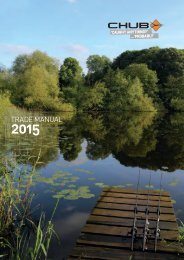CHAMPAGNE
This combination of weather influences makes for constant, moderate precipitation – a near-ideal pattern of rainfall that provides the vines with just enough water to produce quality fruit. Mean annual rainfall for the Champagne region as a whole is close to 700mm, ranging from 600mm to 900mm depending on the area.
This combination of weather influences makes for constant, moderate
precipitation – a near-ideal pattern of rainfall that provides the vines with just
enough water to produce quality fruit. Mean annual rainfall for the Champagne
region as a whole is close to 700mm, ranging from 600mm to 900mm depending
on the area.
Create successful ePaper yourself
Turn your PDF publications into a flip-book with our unique Google optimized e-Paper software.
and second<br />
fermentation<br />
Traditional bottling machine<br />
second fermentation. The bottles used must be made of strong glass, in accordance with strict specifications relating to<br />
pressure resistance and general durability. They must be capable of withstanding high pressure and repeated handling.<br />
Once filled, the bottles are hermetically sealed with a polyethylene stopper known as a ‘bidule’, which is held in place by<br />
a crown cap. A few producers still use cork for the ‘tirage’ (bottling) stopper. The bottles are then transferred to the cellar<br />
and stacked ‘sur lattes’: horizontally, row upon row, usually in steel cages.<br />
Inside the bottle, the wine undergoes a second fermentation that continues for 6-8 weeks. The yeasts consume the<br />
sugar, transforming it to alcohol and carbon dioxide, releasing esters and other superior alcohols that contribute to the<br />
wine’s sensory profile.<br />
Bottles stacked ‘sur lattes’<br />
Bottling<br />
and second<br />
fermentation<br />
29

















